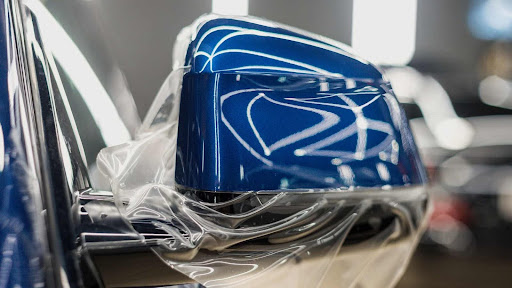Table of Contents
Introduction
Your car’s paint is one of its most vulnerable components. Every time you drive, it’s exposed to road debris, harsh weather, UV rays, bird droppings, and contaminants that can damage its finish. Paint Protection Film (PPF) is one of the most effective ways to shield your vehicle’s exterior, preventing chips, scratches, and fading.
But how long does PPF actually last? Can it provide lifelong protection, or will it wear down over time? In this guide, we’ll cover everything you need to know about PPF’s lifespan, what affects its durability, and how to maximize its longevity.
How Long Does PPF Typically Last?
The lifespan of PPF depends on multiple factors, including the quality of the film, installation process, and maintenance. However, most high-quality paint protection films last between 5 and 10 years. Some premium brands offer warranties that extend beyond this period, ensuring long-term protection.
That being said, not all PPF is created equal. Entry-level or budget PPF options might only last 2 to 4 years before showing signs of wear, such as yellowing, peeling, or reduced self-healing properties.
PPF Lifespan Based on Quality
- Standard PPF – 2 to 5 years (lower durability, may yellow over time)
- Mid-Range PPF – 5 to 7 years (better durability, some self-healing properties)
- Premium PPF – 7 to 10+ years (high durability, advanced self-healing technology, UV-resistant)
Investing in high-quality PPF ensures long-term durability, keeping your car looking pristine for years.
What Affects the Lifespan of PPF?
Even the best PPF won’t last forever if it’s not cared for properly. Here are the key factors that determine how long your paint protection film will remain effective:
1. Type and Quality of PPF
Premium brands like XPEL, SunTek, and 3M offer advanced self-healing technology, UV resistance, and hydrophobic coatings that help extend the life of the film. Cheaper alternatives may lack these features and degrade faster.
2. Professional Installation
A professional installation is just as important as the quality of the film itself. Improperly applied PPF can result in bubbling, lifting, or peeling over time. Working with an experienced installer ensures a seamless fit and prevents premature wear.
3. Environmental Factors
Your location plays a significant role in how long PPF lasts.
- In hot, sunny climates like Florida, UV rays can accelerate the aging process of PPF if it doesn’t have UV-resistant properties.
- Areas with heavy rain and humidity can impact the film’s adhesive if it’s not maintained properly.
- Frequent exposure to road debris and dirt can wear down the protective layer more quickly.
4. Maintenance and Care
PPF is designed to be low-maintenance, but improper care can shorten its lifespan.
- Avoid harsh chemicals – Strong cleaners, waxes with petroleum, and abrasive tools can degrade the film.
- Hand wash your car – Using a pH-balanced soap and microfiber cloth prevents unnecessary wear.
- Stay away from automatic car washes – High-pressure jets and harsh bristles can cause the film to lift or peel over time.
- Use ceramic coating over PPF – Adding a ceramic coating on top of PPF enhances its hydrophobic properties and makes it easier to clean.
Signs That It’s Time to Replace Your PPF
Even the best PPF will eventually show signs of wear. Here are some indicators that your paint protection film may need replacing:
🔹 Yellowing or discoloration – This is often caused by UV exposure on lower-quality films.
🔹 Peeling or lifting at the edges – If the adhesive starts to fail, the film won’t stay securely in place.
🔹 Scratches or damage that won’t heal – Most PPF has self-healing properties, but deep scratches that don’t disappear may indicate aging film.
🔹 Loss of clarity or gloss – If the film appears hazy or dull, it may be time for a replacement.
If you notice any of these signs, it’s best to consult a professional installer to assess the condition of your PPF.
How to Maximize the Life of Your PPF
To ensure your PPF lasts as long as possible, follow these simple tips:
✅ Wash your car regularly – Dirt and debris can wear down the protective layer over time.
✅ Use a ceramic coating on top of PPF – This adds another layer of protection and enhances its hydrophobic properties.
✅ Park in the shade – Reducing sun exposure helps prevent premature aging.
✅ Inspect the film periodically – Address any small issues before they become major problems.
By taking these steps, you can extend the lifespan of your PPF and keep your car looking brand new for years.
Why PPF Is Essential for Florida Drivers
Florida’s hot, humid climate and intense sunlight can cause paint to fade and deteriorate quickly. Without protection, your car’s paint is constantly at risk of oxidation, fading, rock chips, and scratches.
PPF provides a durable, invisible shield that keeps your car’s exterior in pristine condition, reducing long-term maintenance costs and preserving its resale value.
For high-quality paint protection film installation in Orlando, working with a trusted professional installer ensures that you get maximum durability and flawless application.


